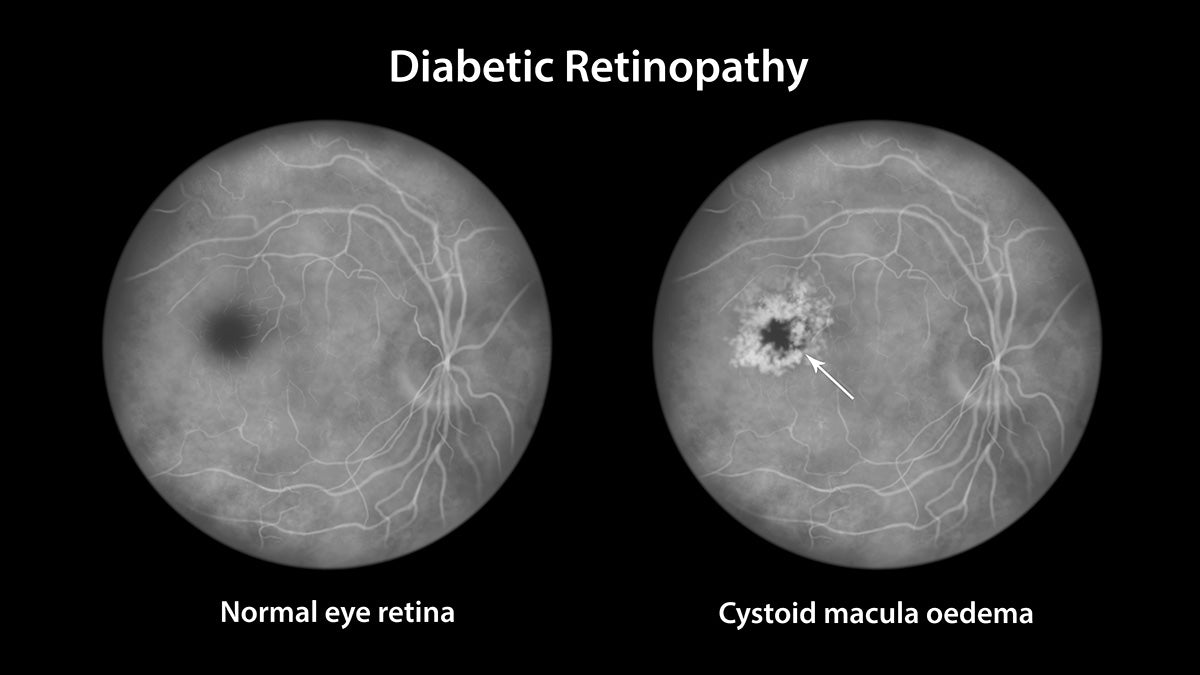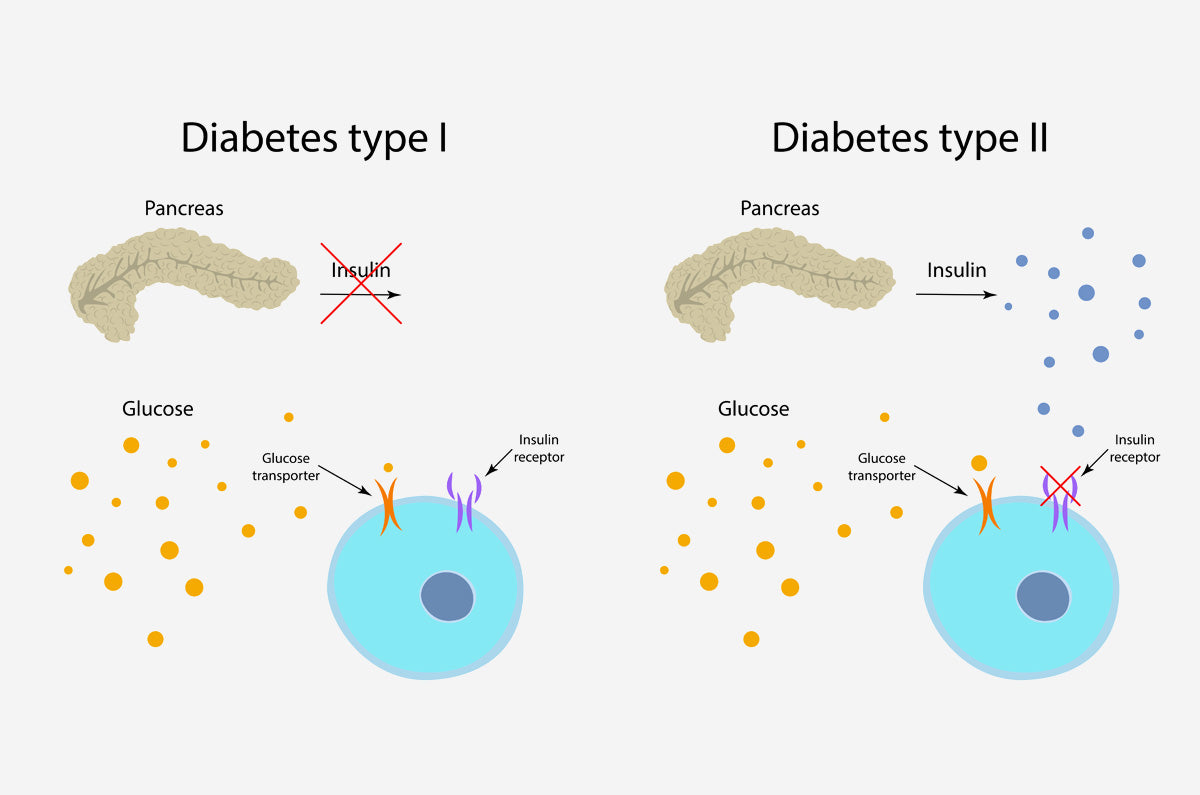When managing diabetes, making the best decisions for better health requires being aware of potential complications. Edema is one such complication, often referred to as swelling, which can take two forms: peripheral edema and macular edema. In this blog, we'll define diabetic edema, its causes and symptoms, and how it can be treated.
Peripheral Edema and Diabetes
Peripheral edema is the term used to describe the swelling of the legs, ankles, and feet as a result of the buildup of fluid in tissues. Diabetic edema can be attributed to several different causes. Blood vessels can be harmed by high blood sugar levels, which would affect the body's ability to circulate fluids. Further, some diabetic medications can have side effects, such as fluid retention, that can aggravate peripheral edema.
Symptoms of Peripheral Edema
Peripheral edema is characterized by noticeable swelling and fluid retention in affected areas, such as the hands or lower legs. Individuals may also experience discomfort, tightness, and changes in the texture of their skin. It's essential to recognize the symptoms of diabetic edema and get prompt medical treatment because the condition can indicate serious health risks.
Treatment and Management
The treatment of peripheral edema requires a multifaceted approach. Lifestyle changes, such as eating a well-balanced diet and exercising regularly, can help regulate fluid balance. Medications designed specifically to reduce fluid retention may also be prescribed.
Healthcare professionals may recommend compression garments or other therapeutic interventions in more severe cases to alleviate symptoms and improve circulation.
Macular Edema and Diabetes
Macular edema affects the eyes and is frequently associated with diabetic retinopathy, a complication of diabetes that impacts the blood vessels in the retina. Elevated blood sugar levels can harm blood vessels in the eyes, causing fluid leakage into the macula—the part of the retina responsible for central vision. As a result, macular edema develops.

Symptoms of Macular Edema
Macular edema primarily affects vision. Individuals with macular edema might experience blurred or distorted vision, floaters, and dark spots. If left untreated, macular edema can cause gradual vision loss, which underscores the importance of early detection and management.
Treatment and Management
Macular edema requires specialized eye care. Medications and eye injections may be prescribed to reduce swelling and control the condition. Medical providers may also recommend laser therapy and surgical intervention in other cases. Regular eye exams and monitoring will be necessary for tracking changes in vision and the condition's progression.
Monitoring Blood Glucose Levels
Proper diabetes management, including preventing and controlling medical complications, requires regularly monitoring blood glucose levels. By keeping track of your blood sugar, you will gain insight into how your body responds to medications, diet, and physical activity. Further, regular monitoring will help you to make informed decisions.
Using a reliable and convenient blood glucose monitoring device in your daily routine can make the process easier and stress-free. The POGO Automatic® Monitor was designed to be discreet, fast, and easy to use. With Pogo, you can test quickly and return to living life to the fullest.
Benefits of Blood Glucose Monitoring |
Why It Matters |
| Early detection of high or low blood sugar levels | Prompt action can prevent complications. |
| Personalized diabetes management | Know how to adjust medications and your lifestyle based on your needs. |
| Improved overall health | Better control reduces the risks of complications. |
Monitor Blood Glucose With POGO Automatic®
While managing diabetes comes with its unique set of health challenges, it's important to remain vigilant about potential complications such as peripheral and macular edema. Detecting these issues early, maintaining regular monitoring, and taking proactive steps are essential for effectively addressing these complications.
If you suspect you may be experiencing diabetic edema, don't hesitate to consult your healthcare team. Early diagnosis and prompt treatment are essential to ensure the best possible medical outcomes.
Consider the POGO Automatic blood glucose monitoring device for a fast and unobtrusive way to monitor blood glucose levels. Pogo offers a seamless solution that easily integrates into your daily routine, enabling you to take control of diabetes management.
Discreet, on-the-go, all-in-one glucose testing.
POGO Automatic is the only FDA-cleared blood glucose monitor that lances and collects blood automatically, in one simple step, with its 10-test cartridge technology, eliminating the need to carry separate lancets and test strips. Reach out today to learn more about how you can check your blood without interrupting your day.
 |
Robert MillerRobert Miller is a customer experience specialist committed to helping people navigate the world of diabetes. He focuses on finding innovative tools and strategies that make diabetes management easier to support long-term wellness. |
All content on this website is for educational purposes only and does not replace the guidance of your healthcare practitioner. Always seek the advice of your physician or other qualified healthcare provider with any questions you may have regarding a medical condition or treatment and before undertaking a new healthcare regimen, and never disregard professional medical advice or delay in seeking it because of something you have read on this website.
PL000419 Rev A



